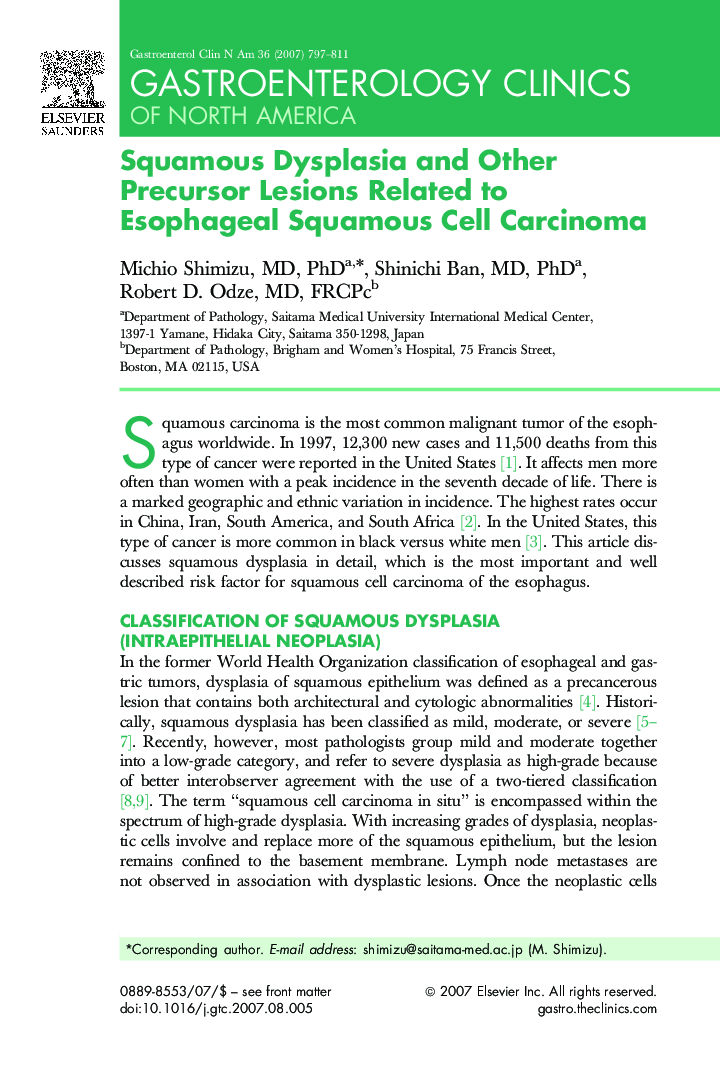| Article ID | Journal | Published Year | Pages | File Type |
|---|---|---|---|---|
| 3301662 | Gastroenterology Clinics of North America | 2007 | 15 Pages |
Abstract
Squamous cell carcinoma is the most common tumor of the esophagus worldwide, and it is believed to develop through a sequence of dysplastic precursor lesions, which can be detected both endoscopically and microscopically. There are no published guidelines regarding treatment for dysplasia; however, most authorities recommend increased endoscopic surveillance, with biopsies, for patients with flat low-grade dysplasia and endoscopic mucosal resection, endoscopic submucosal dissection, or esophagectomy for patients with high-grade dysplasia. Future studies are needed to define appropriate endoscopic surveillance frequencies for patients with premalignant lesions of the esophagus. This article discusses squamous dysplasia in detail, which is the most important and well-described risk factor for squamous cell carcinoma of the esophagus.
Related Topics
Health Sciences
Medicine and Dentistry
Gastroenterology
Authors
Michio MD, PhD, Shinichi MD, PhD, Robert D. MD, FRCPc,
